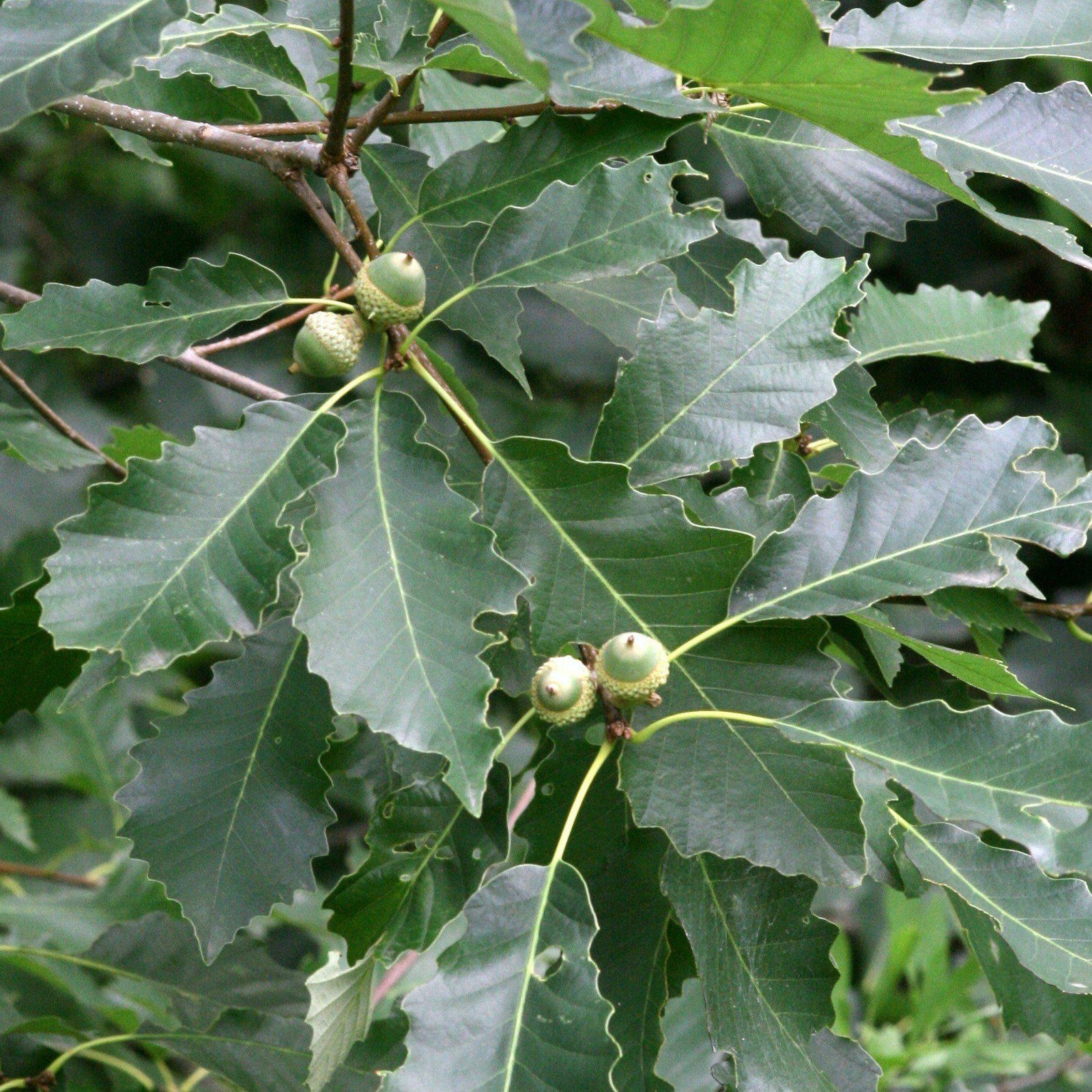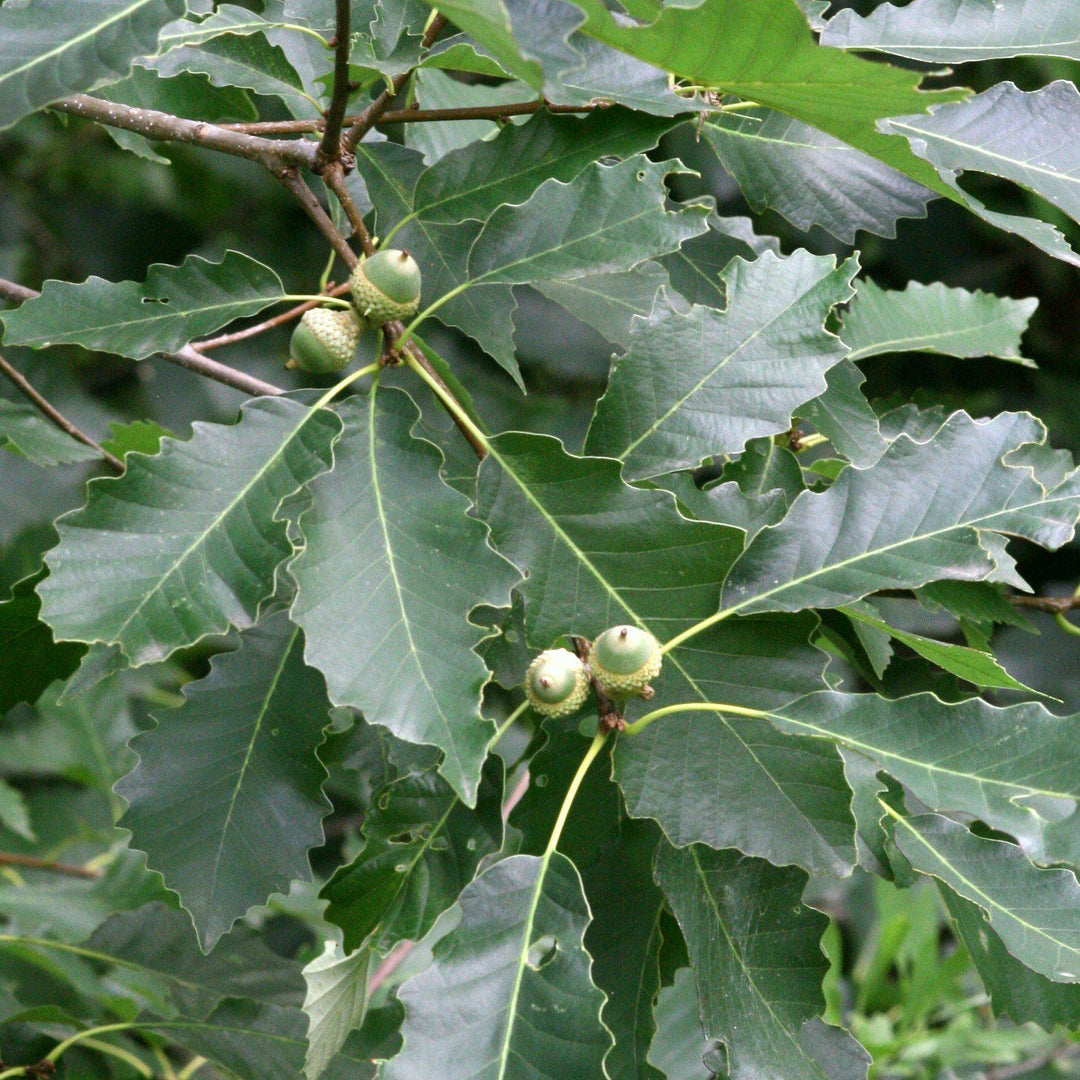Chinkapin Oak is a medium-sized native deciduous tree with an open globular crown. The toothed foliage that resembles chestnut leaves is a dark green and turns shades of yellow-brown in fall. The acorns have cups that cover half the nut and are edible, but it may take 30 years to produce first acorn crop. Best grown in full sun and rich acidic well-drained soils. Tolerates wet soils.
|
Type: |
|
|
Origins: |
Eastern US; GA Native |
|
Height: |
40’ - 60’ |
|
Spread: |
50’ - 70’ |
|
Spacing: |
60’ |
|
USDA Hardiness Zone: |
5 - 7 |
|
Culture: |
|
|
Bloom Color: |
Green |
|
Season of Interest: |
MAINTENANCE NEEDS: Low Maintenance. Chlorosis is common in alkaline or neutral soils. Oaks are susceptible to a large number of diseases, including oak wilt, blight, root rot, anthracnose, oak leaf blister, cankers, leaf spots, and powdery mildew. Potential insect pests include scale, oak skeletonizer, leaf miner, galls, oak lace bugs, borers, caterpillars and nut weevils.
LANDSCAPE USES: Accents or Group Plantings, Borders, Woodland Gardens, Naturalized Areas, Wildlife Gardens, Privacy Screen, and Shade Tree.
COMPANION PLANTS: Serviceberry, Magnolia, Burning Bush
IMAGE: Vojtěch Zavadil, 2494-Quercus muehlenbergii-Arb.Brno-8.12, CC BY-SA 3.0



















































